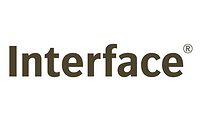Tarkett has published its 2011 results. Net sales grew by 8.8% over 2010. According to the company, this performance results from a strong organic growth (6.8%) and from acquisitions (2.8%), while exchange rates had a slightly unfavorable impact (0.7%).
"Our strategy of innovation and growth in emerging countries has been successful in 2011 and will be carried on. We remain prudent for 2012, given the risks that continue to weigh on European economies. In this environment, our team’s priority will be to strengthen our margins," said Michel Giannuzzi, CEO of Tarkett.
Organic growth came mostly from emerging countries (Eastern Europe, South America), where the Group reported sales up by 21% versus 2010. Emerging countries now account for 38% of total Group sales, versus 34% in 2010.
In Western Europe and North America, flooring markets have been relatively stable, even if the situation varied across the regions. As an example, Spain and Italy had a very challenging year, while Nordic economies demonstrated a strong dynamism. In this environment, Tarkett continued to progress by 5% in Western Europe and by 2% in North America.
Sports surfaces (mainly artificial turf and running tracks) have suffered a reduction in sales by 9% compared to 2010, mainly due to budget cuts initiated by local communities in Europe.
EBITDA before unusual items declined by 14%, at €191 million. The Group profitability has been particularly impacted by the raw material price increases that have taken place since Q2-2010. This effect alone accounts for a €110 million hit on margins. Selling price increases implemented in the second half of 2010 and during 2011 have enabled Tarkett to recover 65% of this impact. These selling price increases will have a positive carryover effect on 2012, the company said.
The net result was €25 million, with net sales of €2.1 billion. Financial expenses have been kept under control and represented only 1% of net sales. However, the results reported by certain regions have led the Group to adopt a prudent view and to depreciate €16 million of deferred tax assets that had been previously recognized on the balance sheet.
Lower operating cash-flow was explained in particular by a strong industrial investment program. On top of the reduction in operating margins, two elements had a negative effect on operating cash-flow. The growth in working capital (€23 million) was contained; despite the strong growth of sales and the geographical expansion of the Group, inventory turns remained stable.
Additionally, capital investments increased by €31 million versus 2010, following the launch of significant investment project such as the implementation of a new calender in Russia, and LVT (Luxury Vinyl Tiles) production capacity increases or the deployment of SAP within the Group.
For the first time in four years, Tarkett paid a dividend in 2011, amounting to €103 million. In spite of that, the Group indebtedness remains at a low level, with a leverage ratio (Net debt / EBITDA) of 1.7 times, and a gearing ratio (Net debt / Equity) of 53%, according to the company.
With the refinancing of its main credit facility achieved in June 2011 (€450 million), Tarkett said it has the necessary financial resources to pursue its strategy of targeted acquisitions. In 2011, the Group acquired Marty, a French specialist of engineered wooden floors.
Tarkett's net sales up 8.8% in 2011
Looking for a reprint of this article?
From high-res PDFs to custom plaques, order your copy today!



